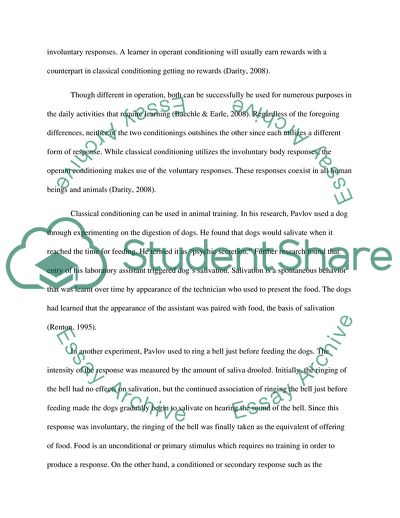Cite this document
(The Character and Prerequisites of Conditioning Essay Example | Topics and Well Written Essays - 1250 words - 14, n.d.)
The Character and Prerequisites of Conditioning Essay Example | Topics and Well Written Essays - 1250 words - 14. https://studentshare.org/psychology/1820918-psychology
The Character and Prerequisites of Conditioning Essay Example | Topics and Well Written Essays - 1250 words - 14. https://studentshare.org/psychology/1820918-psychology
(The Character and Prerequisites of Conditioning Essay Example | Topics and Well Written Essays - 1250 Words - 14)
The Character and Prerequisites of Conditioning Essay Example | Topics and Well Written Essays - 1250 Words - 14. https://studentshare.org/psychology/1820918-psychology.
The Character and Prerequisites of Conditioning Essay Example | Topics and Well Written Essays - 1250 Words - 14. https://studentshare.org/psychology/1820918-psychology.
“The Character and Prerequisites of Conditioning Essay Example | Topics and Well Written Essays - 1250 Words - 14”. https://studentshare.org/psychology/1820918-psychology.


